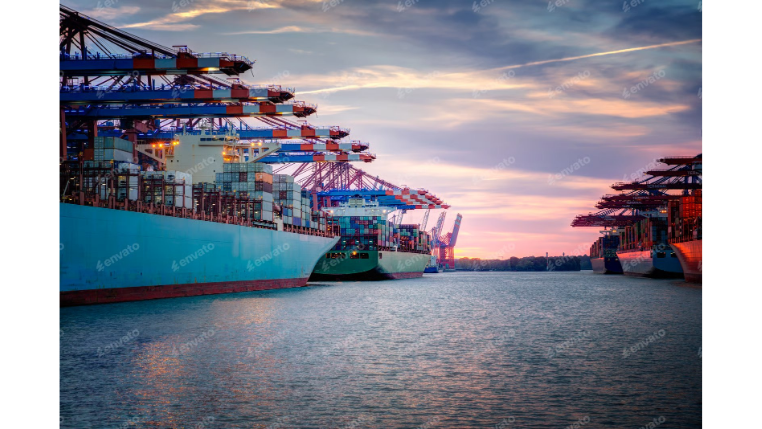An agile and resilient supply chain is no longer a competitive advantage; it's a fundamental requirement for business survival and growth. Achieving this state requires careful planning, technology adoption, and a deep understanding of your operational ecosystem. According to the Management Events Report, key drivers for supply chain development include reducing costs, improving responsiveness, and mitigating risks. However, the journey toward optimization is often derailed by common yet critical errors.
Steering clear of these pitfalls is the first step toward building a supply chain that not only supports but actively accelerates your business goals. Here are seven of the most significant supply chain management mistakes and how to avoid them.
1. Lack of a Cohesive and Evolving Strategy
Operating without a well-defined strategy is like navigating a complex shipping route without a map. A comprehensive supply chain strategy is the backbone of your entire logistics operation. Its primary purpose is to ensure that every decision, from procurement to final delivery, aligns perfectly with the company's overarching business goals. A clear strategy provides a roadmap for resource allocation, performance measurement, and long-term planning.
However, a critical mistake is treating this strategy as a static document. The business landscape is in constant flux, influenced by geopolitical events, shifting consumer demands, and technological advancements. A strategy developed last year might be obsolete today.
How to Avoid It:
- Establish Clear Objectives: Define what success looks like with measurable Key Performance Indicators (KPIs), such as on-time delivery rates, inventory turnover, and cost per unit.
- Regularly Review and Adapt: Schedule quarterly or semi-annual reviews of your supply chain strategy to assess its relevance and effectiveness. Be prepared to pivot in response to market changes or internal business shifts.
2. Ineffective Team Structure and Talent Management
Even the best strategy will fail without the right people to execute it. A common pitfall is improper staff allocation, where roles are poorly defined, or teams lack the specific expertise needed to handle the complexities of modern logistics. A centralized approach, where specialized managers oversee distinct units like procurement, warehousing, and transportation, ensures that expert knowledge is available to manage crises and drive efficiency.
Furthermore, a collaborative work environment is crucial. When departments operate in silos, information flow is stifled, leading to delays, errors, and missed opportunities for optimization.
How to Avoid It:
- Foster Cross-Functional Collaboration: Encourage regular communication between different teams in the supply chain.
- Invest in Continuous Learning: The logistics industry is rapidly evolving. Provide ongoing training to keep your team's skills sharp and up-to-date with the latest technologies and best practices.
3. Ignoring the Total Cost of Ownership (TCO)
One of the most tempting and damaging mistakes is focusing exclusively on the cheapest freight rate. While transportation is a significant expense, it's only one piece of a much larger puzzle. The Total Cost of Ownership (TCO) provides a holistic view by encompassing all direct and indirect costs associated with a product's journey through the supply chain.
This includes:
- Procurement and Transportation Costs: The initial price and shipping fees.
- Warehousing and Inventory Holding Costs: Storage, insurance, and the cost of capital tied up in inventory.
- Operational and Customs Fees: Handling, labor, tariffs, and taxes.
- Risk and Quality Control Costs: The potential cost of delays, damage, or defective products from a cheaper but less reliable supplier.
Focusing solely on one element, like freight, can lead to higher overall costs when other factors are considered.
How to Avoid It:
- Adopt a TCO Framework: Before making sourcing or logistics decisions, calculate the TCO for each option. A supplier with a slightly higher unit price might offer lower TCO due to better reliability and lower transport costs.
4. Failure to Properly Optimize Inventory
Inventory management is a delicate balancing act. Holding excessive inventory ties up valuable capital and incurs significant costs for storage, handling, and potential obsolescence. Conversely, holding too little inventory leads to stockouts, lost sales, and frustrated customers. A frequent error is failing to recognize that inventory management costs can constitute a large portion of total logistics expenses.
How to Avoid It:
- Leverage Demand Planning and Forecasting: Use historical data and predictive analytics to forecast customer demand accurately. This allows you to align procurement and production, maintaining optimal inventory levels.
- Implement Modern Inventory Strategies: Explore models like Just-In-Time (JIT) where appropriate, or use safety stock levels based on data-driven risk analysis rather than guesswork.
5. Neglecting Key Relationships with Customers and Suppliers
In today's interconnected market, a supply chain cannot thrive by focusing only on internal processes. Building strong, collaborative relationships with both customers and suppliers is paramount. Poor customer relationships lead to churn and reputational damage, while weak supplier relationships can result in delays, quality issues, and a lack of flexibility when disruptions occur.
How to Avoid It:
- Be Customer-Centric: Actively seek customer feedback to understand their needs and pain points. Tailor your logistics operations to deliver an exceptional experience that fosters trust and loyalty.
- Treat Suppliers as Partners: Move beyond purely transactional relationships. Collaborate with key suppliers on forecasting, planning, and process improvement to build a more resilient and efficient supply chain for both parties.
6. Resisting Crucial Technology Adoption
Relying on outdated systems like spreadsheets and manual tracking in an era of automation and big data is a recipe for inefficiency. Failure to adopt modern technology is a major pitfall that leaves a business vulnerable to competitors who are leveraging digital tools for greater visibility, speed, and accuracy. Technology is the enabler of a truly agile and responsive supply chain.
How to Avoid It:
- Embrace Digital Transformation: Invest in modern logistics software, such as a Transportation Management System (TMS) or a comprehensive supply chain visibility platform. These tools automate processes, provide real-time data, and unlock powerful analytics for better decision-making. Utilizing a unified platform like Modaltrans can provide the end-to-end visibility needed to optimize costs and build a more resilient operation.
7. Overlooking Sustainability and Ethical Practices
In the past, sustainability might have been an afterthought, but today it's a core business imperative. Modern consumers and business partners increasingly prioritize companies with a strong commitment to corporate social responsibility (CSR) and a minimal carbon footprint. Neglecting sustainability is a mistake that can lead to brand damage, regulatory non-compliance, and difficulty attracting top talent and investors.
How to Avoid It:
- Integrate Sustainability into Your Strategy: Actively look for ways to reduce waste, optimize shipping routes to lower emissions, and partner with suppliers who share your commitment to ethical and environmentally friendly practices.
- Be Transparent: Report on your sustainability metrics. This not only builds trust with customers but also helps identify further areas for improvement.
Conclusion: Building a Resilient Future
Avoiding these common mistakes is essential for any business aiming for long-term success in a dynamic global market. By developing a flexible strategy, empowering your team, adopting a holistic cost perspective, optimizing inventory, nurturing relationships, and embracing technology, you can build a truly agile and resilient supply chain. Such a supply chain doesn't just prevent errors; it becomes a powerful engine for growth, cost reduction, and superior customer satisfaction.










